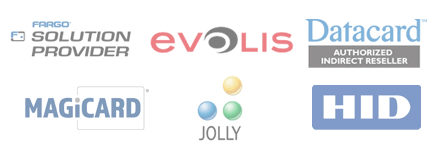 Loading... Please wait...
Loading... Please wait...Shop by Product
A Look at Healthcare ID Cards from Around the World
Posted on 21st Aug 2014
Though they have yet to become ubiquitous in the United States, Healthcare ID cards are widely used around the world. In some cases they are compulsory, and in others they are meant
only to enhance convenience for both patients and providers. Most experts agree that these cards will soon become a more common feature of American life. In advance of that day, we have put together this look at how healthcare ID cards are used around the world.Healthcare ID Cards in Europe

Most European countries issue their own nation healthcare ID cards, but in order to ensure that everyone on the continent has reliable access to medical services, a broader system is also in place that exists outside of national borders. The European Health Insurance Card (EHIC) is issued for free to residents of 32 countries and entitles the card holder to free or reduced-fare healthcare in any of the participating countries. Users can download a smartphone app that explains crucial details about the program in 24 different languages.
Healthcare ID Cards in Taiwan
As many as 97% of the citizens of Taiwan use a Health IC smart card. The card contains only 32 kb of information – relatively small by today's standards – enough to contain provider and patient profiles. The cards were initially issued to cut down on instances of insurance fraud, overcharging, and duplication of treatment and services. In spite of some early problems, both patients, providers, and the administrators of Taiwan's single-payer health system now view the cards as an indispensable tool.
Healthcare ID Cards in Kenya
Kenya relies on Medismart cards to improve service deliver and expand access to healthcare coverage. The smart technology contained in the cards is ample enough to contain a patient's entire electronic medical record. Allowing patients to carry this information with them ensures that providers have complete access to vital information without having to rely on a more complex, national health IT infrastructure. This program has been particularly effective for expanding healthcare services to the working poor.
Healthcare ID Cards in Algeria
More than 7 million people in Algeria now use healthcare ID cards. When the system was implemented in 2007, Algeria was one of the first countries to used advanced smartcards to improve healthcare delivery. Today, Algeria has one of the most complete health IT infrastructures in the entire world. That has led to decreased costs, increased access, and expanded options for service delivery. And since so much of this system is integrated with and accessible through healthcare ID cards, patients can reap the benefits with relative ease.
Healthcare ID Cards in Japan
The Japanese government passed a bill in 2013 to expand its existing national ID system and integrate more of the country's social services under one umbrella. Although details of the bill are still being worked out, and the first round of integration won't happen until 2015, it is widely believed that the cards will be used to access health benefits. This would put Japan on the forefront of healthcare ID cards, essentially creating a single system through which all citizens would access essential services.
In this article we have discussed national healthcare ID cards, but keep in mind that many places, including the United States, are already using healthcare ID cards to help administer private insurance plans. The scale may be smaller, but the benefits are the same. Patients can use this simple, portable tool to take essential medical information with them anywhere. Providers can use this same tool to instantly access information that will affect care and billing. Compared to the strategies of the past, and alternative solutions being explored at present, healthcare ID cards are a cost-effective solution that benefits all parties involved. Learn more about the technology involved and begin exploring the feasibility of this strategy by partnering with Evergreen ID Systems.




